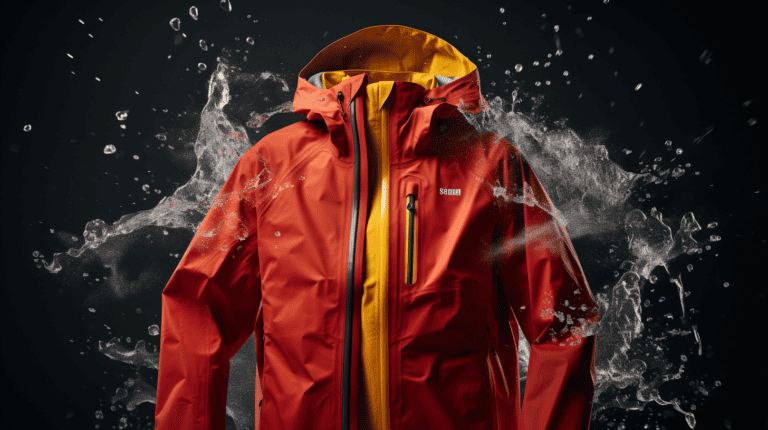Down vs. Synthetic Fillings: Which Performs Best in Extreme Cold?

In extremely cold weather conditions, choosing the right type of insulation for your outdoor gear can mean the difference between staying warm and comfortable or facing potential cold-related risks.
Two popular options for insulation are down and synthetic fillings. In this article, we will delve into the performance analysis of down and synthetic fillings in extreme cold, exploring their composition, insulation properties, performance metrics, and factors influencing the choice of filling.

Understanding Down and Synthetic Fillings
The Composition of Down Fillings
Down fillings consist of small clusters of fine feathers found underneath the exterior feathers of waterfowl, such as ducks and geese. These clusters possess excellent thermal properties due to their natural ability to trap air and create insulation. The down clusters are carefully harvested from waterfowl during their molting season, ensuring that the birds are not harmed in the process.
When it comes to down fillings, the quality is determined by the fill power. Fill power refers to the amount of space one ounce of down occupies in cubic inches. The higher the fill power, the better the insulation. Down fillings with a higher fill power provide more warmth with less weight, making them highly desirable for outdoor enthusiasts and those in colder climates.
Another advantage of down fillings is their lightweight nature. Due to the natural structure of down clusters, they are incredibly lightweight, making them easier to move around and wear. This is especially beneficial for activities that require mobility, such as hiking, skiing, or climbing.
Additionally, down fillings are highly compressible. They can be packed into a small space without losing their loft or insulation properties. This makes down-filled products, such as sleeping bags or jackets, easy to carry and store when not in use.
The Composition of Synthetic Fillings
Synthetic fillings, on the other hand, are made from man-made materials such as polyester fibers. These fibers are designed to mimic the thermal properties of down and create insulation. Unlike down fillings, synthetic fillings are not derived from animals, making them a cruelty-free alternative for those who prefer not to use animal products.
One of the key advantages of synthetic fillings is their ability to retain warmth even when wet. Unlike down, which loses its insulation properties when exposed to moisture, synthetic fillings continue to provide warmth and insulation. This makes synthetic-filled products a reliable option in damp and humid conditions, where keeping dry may be a challenge.
Synthetic fillings also offer hypoallergenic properties, making them suitable for individuals with allergies or sensitivities. Unlike down, which may trigger allergic reactions in some people, synthetic fillings are less likely to cause allergies. This makes them a popular choice for bedding, pillows, and other products that come into close contact with the skin.
Synthetic fillings are generally more affordable compared to down fillings. The manufacturing process of synthetic materials is less expensive, resulting in a lower price point for synthetic-filled products. This makes them accessible to a wider range of consumers who may be on a budget or prefer a more cost-effective option.
The Science of Insulation in Extreme Cold
When venturing into extreme cold temperatures, it is crucial to understand the science behind insulation. Proper insulation is essential for retaining body heat and preventing cold air from seeping in. In this article, we will explore the fascinating mechanisms of insulation, focusing on two popular types: down fillings and synthetic fillings.
How Down Fillings Insulate
Down fillings, derived from the soft feathers found beneath the outer feathers of ducks and geese, have been used for centuries as a natural insulator. The secret lies in the unique structure of down feathers. Each individual down cluster is composed of thousands of tiny filaments that interlock, creating countless air pockets.
These air pockets are the key to Down’s exceptional insulation properties. When you wear a down-filled garment, the air pockets trap warm air close to your body, forming a protective barrier against the cold. Simultaneously, they prevent cold air from penetrating the insulation, maintaining a comfortable temperature.
Down fillings possess an impressive warmth-to-weight ratio. This means that they provide exceptional insulation without adding unnecessary bulk or weight to your clothing. As a result, down-filled garments offer both warmth and comfort, allowing you to move freely even in the most extreme cold conditions.
How Synthetic Fillings Insulate
Synthetic fillings, while not as efficient as down in terms of warmth-to-weight ratio, have made significant advancements in insulation technology. These fillings are composed of synthetic fibers that mimic the structure of down, creating similar air pockets that trap warm air.
One of the advantages of synthetic fillings is their ability to retain insulation even when exposed to moisture. Unlike down, which loses its insulating properties when wet, synthetic fillings maintain their ability to trap warm air, making them suitable for wet environments or activities that involve a high level of perspiration.
Moreover, synthetic fillings offer a cruelty-free alternative to down fillings. As they are made from man-made materials, no animals are harmed in the production process. This aspect has made synthetic fillings increasingly popular among individuals who prioritize ethical and sustainable choices.
Whether you opt for down fillings or synthetic fillings, both provide effective insulation in extreme cold temperatures. Down fillings offer exceptional warmth-to-weight ratio and natural insulation properties, while synthetic fillings excel in retaining insulation even when exposed to moisture. Ultimately, the choice between the two depends on your specific needs, preferences, and environmental considerations.
Performance Metrics for Cold Weather Gear
Measuring Thermal Efficiency
Thermal efficiency is a crucial performance metric for cold weather gear. It measures the effectiveness of insulation in retaining body heat. The higher the thermal efficiency, the better the gear is at keeping you warm in extreme cold.
Manufacturers often evaluate the thermal efficiency of down and synthetic fillings through various laboratory tests and standards. These tests involve subjecting the materials to simulated cold weather conditions and measuring the rate at which heat is transferred through the insulation. The results are then used to calculate the thermal efficiency of the gear.
In addition to laboratory tests, manufacturers also consider real-world scenarios when assessing thermal efficiency. They take into account factors such as wind chill, humidity, and activity level to determine how well the gear performs in different conditions. This comprehensive approach ensures that the gear is designed to provide optimal thermal insulation in a variety of cold weather environments.
Assessing Moisture Resistance
Another important performance metric is moisture resistance. In extreme cold conditions, exposure to moisture, such as snow or rain, can be detrimental to insulation. Down fillings have traditionally struggled to maintain insulation when wet, as moisture causes the down clusters to clump together, reducing their ability to trap air.
To address this issue, manufacturers have developed innovative technologies to enhance the moisture resistance of down fillings. They treat the down with water-repellent coatings or use hydrophobic fibers to create a barrier against moisture. These advancements help to prevent the down from absorbing water, thus maintaining its loft and insulation properties even when exposed to wet conditions.
In contrast, synthetic fillings have a higher resistance to moisture. The synthetic fibers used in these fillings are inherently water-resistant, meaning they do not absorb moisture like down. This makes synthetic-filled gear a reliable choice for activities that involve prolonged exposure to wet or snowy conditions.
Manufacturers assess the moisture resistance of cold weather gear through rigorous testing. They subject the gear to simulated rain or snow showers and measure the amount of water absorbed by the insulation. This data is then used to determine the gear’s ability to retain insulation when exposed to moisture.
Overall, both thermal efficiency and moisture resistance are critical performance metrics for cold weather gear. By evaluating and improving these aspects, manufacturers ensure that their gear provides optimal warmth and protection in extremely cold conditions.
Comparative Analysis: Down vs. Synthetic
Thermal Performance Comparison
When comparing the thermal performance of down and synthetic fillings, it is important to consider factors such as the fill power of down and the weight of the synthetic insulation. Fill power refers to the volume occupied by one ounce of down, with higher fill powers indicating better insulation capabilities.
Down, which is made from the soft plumage found beneath the feathers of ducks and geese, has long been revered for its exceptional warmth. The lofty clusters of down trap air, creating a layer of insulation that effectively retains body heat. The higher the fill power, the larger and more resilient the down clusters, resulting in greater warmth and comfort.
On the other hand, synthetic fillings, such as polyester or nylon fibers, have made significant advancements in recent years. Through innovative technology, manufacturers have been able to create synthetic insulation that closely mimics the insulating properties of down. These synthetic fibers are designed to trap air, providing warmth similar to down, but at a lower weight.
While down still holds an edge in terms of fill power and overall warmth, synthetic fillings are catching up. With continuous research and development, synthetic insulation is becoming increasingly efficient, offering comparable warmth to down while being more lightweight.
Moisture Resistance Comparison
As mentioned earlier, moisture resistance is a significant factor to consider in extreme cold conditions. While down fillings struggle with moisture and lose insulation properties when wet, synthetic fillings maintain insulation effectiveness even when exposed to moisture.
Down, being a natural material has a tendency to absorb moisture. When exposed to rain, snow, or high humidity, down clusters can become saturated, causing them to clump together and lose their ability to trap air effectively. This results in a significant reduction in insulation and warmth.
On the other hand, synthetic fillings are engineered to resist moisture. The synthetic fibers used in these insulations do not absorb water like down do. Instead, they repel moisture, allowing the insulation to maintain its loft and insulation properties even when exposed to wet conditions. This makes synthetic fillings a more reliable option in environments where dampness and humidity are common.
Furthermore, synthetic fillings dry faster than down. If a synthetic-insulated garment or sleeping bag gets wet, it can be easily dried by hanging it up or using a dryer. This quick-drying feature is particularly advantageous in situations where the gear needs to be used again soon after being exposed to moisture.
In conclusion, while down fillings have long been favored for their exceptional warmth, synthetic fillings are closing the gap. With advancements in technology, synthetic insulation now offers comparable warmth to down, while also providing superior moisture resistance. Whether you choose down or synthetic will depend on your specific needs and preferences, but both options have their merits in different situations.
Factors Influencing the Choice of Filling
When it comes to choosing the right filling for your outdoor gear, there are several factors to consider. Two commonly used fillings are down and synthetic fillings. Let’s explore some of the key considerations that can help you make an informed decision.
Cost Considerations
Cost is often a significant factor when deciding between down and synthetic fillings. Down fillings, being a natural material, tend to be more expensive compared to synthetic fillings. However, it is essential to weigh the cost against the performance and longevity of the gear. Down fillings, if properly cared for, can retain their insulation properties for longer durations, making them a worthwhile investment for avid outdoor enthusiasts.
Moreover, down fillings often offer superior warmth and lightweight properties, which can enhance your outdoor experience. The initial investment in down gear may be higher, but the long-term benefits can outweigh the cost.
Ethical Considerations
For some individuals, ethical considerations come into play when deciding between down and synthetic fillings. The sourcing of down feathers might raise concerns regarding animal welfare, as birds are often live-plucked or force-fed in some cases. This raises questions about the ethical implications of using down fillings.
On the other hand, synthetic fillings offer a cruelty-free alternative as they are entirely man-made. They provide insulation without relying on animal products, making them a preferred choice for those who prioritize animal welfare in their purchasing decisions.
Considering the ethical aspect of your gear can give you peace of mind, knowing that your outdoor adventures are not contributing to any harm to animals.
In conclusion, when conducting a performance analysis of down and synthetic fillings in extreme cold conditions, it is clear that both options have their strengths and weaknesses. Down fillings offer superior warmth and lightweight properties but are susceptible to moisture. Synthetic fillings provide reliable insulation, even when wet, and are more cost-effective. The choice ultimately depends on individual preferences, budget, and specific environmental conditions.
By considering factors such as thermal efficiency, moisture resistance, cost, and ethical considerations, you can make an informed decision and ensure your outdoor gear keeps you warm and protected in extreme cold. So, whether you opt for the natural warmth of down or the cruelty-free benefits of synthetic fillings, make sure to choose the filling that aligns with your needs and values.
FAQ
Are down jackets warmer than polyester?
Down jackets are generally warmer for their weight compared to polyester jackets. However, while down excels in dry cold conditions, polyester retains warmth better in damp or wet conditions.
Are down jackets best for cold weather?
Down jackets are excellent for cold, dry weather due to their superior warmth-to-weight ratio. However, in damp or wet conditions, they lose their insulating properties, making synthetic jackets more reliable in such situations.
Is Thinsulate warmer than down?
Thinsulate is a synthetic insulation made of fine microfibers that trap air molecules. It’s less compressible and generally heavier than down for the same warmth, but it retains more of its insulating properties when wet.
In dry conditions, a high-fill-power down might offer more warmth for less weight than Thinsulate. But in damp or wet conditions, Thinsulate might perform better due to its moisture resistance. The choice between the two depends on the specific conditions and user needs.
Is higher fill power better?
Yes, higher fill power means the down has greater loft and can trap more air, providing superior insulation for its weight. This makes garments with higher fill power down lighter and more compressible for the warmth they offer. However, other factors, like construction and amount of down used (fill weight), also affect the overall performance of a garment.






